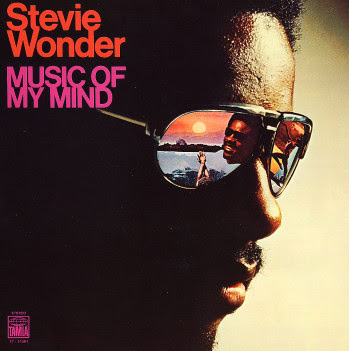Zen Waves: A Digital (musical) Zen Garden
reactable from Nick M. on Vimeo.
Reactable
More about the Reactable
"The reactable hardware is based on a translucent, round multi-touch surface. A camera situated beneath the table, continuously analyzes the surface, tracking the player's finger tips and the nature, position and orientation of physical objects that are distributed on its surface. These objects represent the components of a classic modular synthesizer, the players interact by moving these objects, changing their distance, orientation and the relation to each other. These actions directly control the topological structure and parameters of the sound synthesizer. A projector, also from underneath the table, draws dynamic animations on its surface, providing a visual feedback of the state, the activity and the main characteristics of the sounds produced by the audio synthesizer."
The Bubblegum Sequencer: Making Music with Candy
Jabberstamp: Embedding Sound and Voice in Children's Drawings(pdf)
(A TUI application to support literacy development in children)
Affective TouchCasting (pdf)
TapTap: A Haptic Wearable for Asynchronous Distributed Touch Therapy (pdf)
BodyBeats: Whole-Body, Musical Interfaces for Children (pdf)
Telestory is a Siftables application that looks like it would be quite useful for supporting children who have communication disorders or autism spectrum disorders.
Telestory Siftables application from Jeevan Kalanithi on Vimeo.
"Telestory is an educational, language learning application created by Seth Hunter. In this video, the child is looking at a television screen. He can control onscreen characters, events and objects with the siftables. For example, he has the dog and cat interact by placing the dog and cat siftables next to each other." TeleStory Project Website
Here is a video of how Siftables can be used as equation editors:
Siftables Equation Editor from Jeevan Kalanithi on Vimeo.
RESOURCES ABOUT TUI'S:
5 lessons about tangible interfaces, GDC Lyon, December 2007(pdf) Nicolas Nova
Special Issue on Tangible and Embedded Interaction (Guest Editors: Eva Hornecker, Albrecht Schmidt, Brygg Ullmer) Journal of Arts and Technology (IJART) Volume 1 Issue 3/4 - 2008
Reality-Based Interaction: A Framework for Post-WIMP Interfaces (pdf)
Here are a couple of abstracts of articles related to the use of TUI's in education:
Evaluation of the Efficacy of Computer-Based Training Using Tangible User Interface for Low-Functioning Children with Autism Proceedings of the 2008 IEEE International Conference on Digital Games and Intelligent Toys
"Recently, the number of children having autism disorder increases rapidly all over the world. Computer-based training (CBT) has been applied to autism spectrum disorder treatment. Most CBT applications are based on the standard WIMP interface. However, recent study suggests that a Tangible User Interface (TUI) is easier to use for children with autism than the WIMP interface. In this paper, the efficiency of the TUI training system is considered, in comparison with a conventional method of training basic geometric shape classification. A CBT system with TUI was developed using standard computer equipment and a consumer video camera. The experiment was conducted to measure learning efficacy of the new system and the conventional training method. The results show that, under the same time constraint, children with autism who practiced with the new system were able to learn more shapes than those participating in the conventional method."
Towards a framework for investigating tangible environments for learning Sara Price, Jennifer G. Sheridan, Taciana Pontual Falcao, George Roussos, London Knowledge Lab, 2008
"External representations have been shown to play a key role in mediating cognition. Tangible environments offer the opportunity for novel representational formats and combinations, potentially increasing representational power for supporting learning. However, we currently know little about the specific learning benefits of tangible environments, and have no established framework within which to analyse the ways that external representations work in tangible environments to support learning. Taking external representation as the central focus, this paper proposes a framework for investigating the effect of tangible technologies on interaction and cognition. Key artefact-action-representation relationships are identified, and classified to form a structure for investigating the differential cognitive effects of these features. An example scenario from our current research is presented to illustrate how the framework can be used as a method for investigating the effectiveness of differential designs for supporting science learning"










